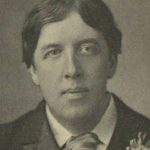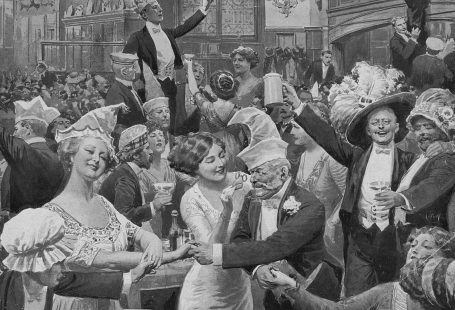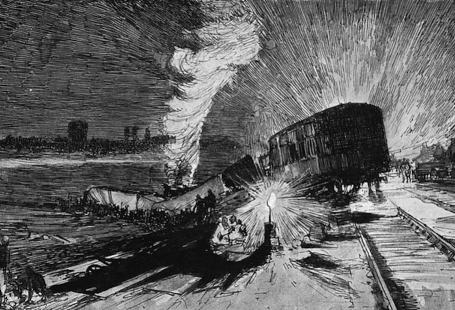In March 1954 news broke that former Second World War fighter pilot and racing driver Roberta Cowell (1918-2011) had become the first known British transgender woman to undergo gender affirmation surgery, an important part of British LGBTQ+ history.

Roberta Cowell, or Betty as she was known to her friends, soon became the ‘most talked of woman in England,’ making headlines across national and regional newspapers. And the way that Roberta used print media to tell her own story is a story in itself: she used the Picture Post to shape her own narrative and the way that she was portrayed in the press.
Register with us now and see what stories you can discover
In this special blog, using newspapers from the time, we will look at how Roberta Cowell was portrayed in the contemporary press. We will look at the fame she experienced, and the struggles she had after her gender affirmation surgery was made public.
Register now and view three pages for FREE
‘Roberta Cowell Tells Her Own Story’
On 6 March 1954 the Lancashire Evening Post ran the following headline: ‘He Changed from ‘Bob’ to Roberta.’ Like many other newspapers that day, the Lancashire Evening Post was reporting on the news that Roberta Cowell had become the first British trans woman to have gender affirmation surgery:
Father of two children, and a wartime fighter pilot, 35-year-old Bob Cowell, of Croydon, has now become attractive, blonde-haired Roberta Elizabeth Cowell, ‘Betty’ to her friends.
This change of sex is believed to be the first case in Britain where an adult male has fully taken on the physical and mental characteristics of a woman. It may well be the most complete change of sex in world medical history.

The press reporting from early March 1954 is marked by a tone of wonder, at the medical science that enabled Roberta’s gender affirmation surgery, and also by how ‘attractive’ she now was. This preoccupation with Roberta Cowell’s looks would endure in the pages of the press throughout the following months.
But it was only in the Picture Post that you could read Roberta Cowell’s ‘own story,’ as an advert in the Belfast Telegraph on 10 March 1954 proclaimed. Indeed, it dubbed Roberta’s story as ‘the most moving document of the century,’ describing how:
Only Roberta Cowell herself, now a young woman of 35, can tell the story of what it felt like to be Robert Cowell, the 23-year-old Spitfire pilot – and to be Bob Cowell, the well-known racing motorist who ‘seemed to disappear’ in 1948.

The advert continued:
The extraordinary truth is that, three years after Bob Cowell disappeared, Roberta Cowell appeared. Bob, the young man who had been a husband and the father of two children, became Roberta, a sensitive young woman – and a potential wife.
Meanwhile, on 6 March 1954 the Belfast News-Letter offered insight into the early life of Roberta Cowell, before she hit the headlines. With hobbies including ‘photography and music,’ her chief passion in life ‘was anything mechanical,’ especially anything to do with cars and motorcycles.
In 1936, Roberta volunteered for the R.A.F., but ‘persistent air-sickness led to her discharge from service.’ She then went to London University to study engineering, ‘spending nearly all her spare time at the wheel of a racing car.’ When the Second World War broke out, Roberta ‘immediately volunteered for the Army,’ and was transferred to the R.A.F., becoming a fighter pilot.

During the Second World War Roberta married Diana Carpenter, having two daughters with her. Rising to the rank of flight-lieutenant, Roberta was a prisoner of war for six months after her aircraft crashed behind enemy lines. And after the war, Roberta returned to her guiding passion for cars, starting ‘an engineering business at Weybridge…designing bodies for cars,’ whilst also making a return to motor racing, last appearing at the 1948 Jersey International Road Race.
And by this point in Roberta’s life, as the Belfast News-Letter relates, she became ‘conscious of changes in physical and mental outlook.’ She undertook hormone treatment, leading an ‘almost isolated existence,’ until 1951 when she underwent gender affirmation surgery, the operation performed by ‘father of plastic surgery‘ Sir Harold Gillies.

Now Roberta was considered to be ‘undoubtedly a woman’ by a ‘panel of doctors,’ as the Belfast News-Letter describes. Her birth certificate was changed on 17 May 1951. But what was next for Roberta, now that she had gone public with the news of her gender affirmation surgery?
Fame And ‘A Woman’s Work’
Fame soon followed in the wake of Roberta Cowell’s brave revelations. On 20 March 1954 the Belfast News-Letter reported that she had found ‘refuge in the Italian Riviera,’ staying in Portofino after ‘her presence was discovered in Santa Margherita.’ Indeed, ‘reporters and photographers swarmed to the villa’ in Portofino, where Roberta was staying with ‘a British woman’ and journalist George Audey, who was helping her to ‘write a book on her ‘life experiences.”
On 22 March 1954 the Birmingham Daily Post reported how ‘Italian police were called in on Saturday to protect Miss Roberta Cowell,’ after ‘journalists laid siege to the converted castle in which she was staying with English friends at Portofino.’
Roberta’s story had whipped up a frenzy in the media, as instalments of it continued to appear in the Picture Post. The Aberdeen Evening Express on 23 March 1954 ran an advert for the next such instalment, which was entitled ‘My Years of Crisis:’
Continuing her exclusive story in Picture Post, Roberta Cowell now tells, in her own words, how her transformation began, and of the amazing operation which followed. Illustrating this extraordinary story are exclusive pictures of her recent return from Paris – which she first visited as a fighter-pilot during the Liberation.

Again, it was affirmed that ‘only in Picture Post can you read the full and true story of Roberta Cowell by Roberta Cowell herself.’ The advert also included four ‘questions that everyone is asking,’ three of which related to gender affirmation surgery itself, and whether an operation like it had ever been performed before, the answer being ‘Almost certainly, No.’ The final question was one that very much belonged to the time, running as follows:
Is Roberta Cowell a woman and a potential wife? The answer of those doctors and others who are in the best position to know is, ‘Yes.’
The most important notion at the heart of attitudes towards gender in the 1950s was the idea that a woman could and should be a wife, and the fact that Roberta could be a ‘wife’ made her gender affirmation surgery all the more acceptable in the eyes of society.
Meanwhile on 31 March 1954 the Aberdeen Evening Express ran an advert for part four of Roberta’s story, which was titled ‘I learn to live as a woman.’ In this section, Roberta narrated the changes her body had experienced, and how ‘She had to learn to dress, talk and make-up as a woman, and to do a woman’s work at home.’ Again, those 1950s archaic gender roles come into play, as Roberta must now be confined to domesticity, doing ‘a woman’s work at home.’ Indeed, for Roberta, it must have been a period full ‘of shocks and surprises.’
‘The New Life of Roberta Cowell’
And what was next for Roberta? In April 1954 she released a book entitled Roberta Cowell’s Story, which was reviewed by Arnold Edmondson for the Liverpool Echo under the heading ‘The New Life of Roberta Cowell.’ Edmondson labelled the autobiography as ‘astonishing,’ whilst commenting on the ‘good-looks’ of the author.
Meanwhile, the cameras continued to follow Roberta. On 1 May 1954 The Sphere pictured ‘the most talked-of woman in England’ alongside her mother Lady Cowell at their Croydon home, marking Roberta’s ‘first visit to the country’ after the news of her gender affirmation surgery ‘received wide publicity.’

Fast forward a couple of years, and Roberta Cowell had once again taken up flying, the Croydon Times on 17 August 1956 reporting how she was now ‘spending every minute she can in the air.’ Indeed, Roberta had ‘for some months…been taking a special course of training in experimental flying and aviation medicine.’ She told the newspaper how:
I am flying jets to show that I can do something useful. It is a dangerous job, but I love it. I shall be able to reveal more about what I am doing at a later stage, but at the moment I cannot give you the name of the place from which I am flying jets.

38-year-old Roberta went on to describe the volume of letters she had received over the two years since she had hit the headlines:
One of the things that keeps me very busy is answering letters. Since the story was published in the papers about my change of sex nearly two-and-half years ago, I have received more than 50,000 letters – and there has not been one unpleasant letter among them.
Meanwhile, her book the Roberta Cowell Story had been ‘serialised in 40 different countries,’ with two more on the way.
A few months later and the Croydon Times was reporting on Roberta’s ‘new hair-do for flying.’ In a letter from Paris, she described how:
Before I left London I had my hair restyled to go more easily under the ‘bone dome’ which has to be worn in a jet. My hairdresser said that there was only one hairstyle which I could possibly wear for supersonic flight – a ‘bang!’

Roberta furthermore spoke excitedly of her future, and also the difficulties of working with her new found fame:
I am likely to be in the news in quite a big way one of these days in connection with jet flying and again, later, in another medical connection. I have not left England for good, but I find that Press interest makes flying very much more difficult.
She was also involved in motor racing once more. The Football Gazette (South Shields) on 31 August 1957 described how Roberta Cowell made a ‘come-back’ at the Shelsley Walsh hill climb event, and in September 1957 The Sphere pictured Roberta taking part in the same race.

Driving a ‘supercharged Emerson-Alta racing-car,’ Roberta set a ‘new ladies’ record with a time of 40.41 seconds for the climb.’ Roberta then professed the ambition to ‘lead her own team of women drivers in next year’s Le Mans 24-hour sports-car classic.’
No Assets, No Job
But all, sadly, was not plain sailing for Roberta Cowell, with her dreams of making a difference and doing something ‘useful’ through flying, and her aspiration to race at Le Mans.
On 19 June 1958 the Aberdeen Evening Express reported how Roberta appeared at the Croydon Bankruptcy Court, where she stated: ‘I say I have no assets. I believe it has been put down as £2.’
The newspaper described what Roberta was wearing (‘a black cloche hat, black sweater and black skirt,’), narrating her financial difficulties, which went as far back as 1946. In 1946 a maintenance order was ‘made in favour’ of her wife and two children, which was paid for by her father, Major-General Ernest Cowell, who had acted as an honorary surgeon to King George VI. In 1947 Roberta formed a motor mechanics firm with a partner, and the bulk of the £14,000 capital ‘was used on the design of and experimental work on Grand Prix cars.’

However, this company was later dissolved, not liquidated, Roberta profoundly telling the court how ‘I was perhaps in that state myself [liquidation] and not paying much attention. At that time my future was completely an unknown quantity.’ She then invested money into a company called Sheridan of London, but in January 1952 that company went into voluntary liquidation. Roberta told the court how:
The reason was that at that time medical examinations had been re-introduced into Grand Prix racing. I was legally a female in 1951, and could not take part in Grand Prix racing. The possibility of publicity came up and I voluntarily liquidated the company and lost all the money.
From her deal with Picture Post Roberta took home about £7,000, and from sales of her book, she received a further £1,400. But that money was now gone, and Roberta struggled to find employment. Another serial of her life story, ‘This Is My Life,’ appeared in the Empire News, as advertised by the Coventry Evening Telegraph. It was described as an ‘amazing human document,’ but still Roberta could not find work.

Some four years later in 1962 the Belfast Telegraph reported on ‘Miss Cowell’s Job Problem.’ As she applied at Croydon County Court for discharge from bankruptcy, she stated how she ‘had found it virtually impossible to get a job.’ She said that this was due to the ‘spotlight’ being on whoever she worked for.
On 2 February 1962 the Daily Mirror reported that Roberta had been given a discharge from bankruptcy, although she still owed £7,000 to her parents. It was reported how she was working as a psychotherapist, whilst she was also writing, but Roberta stated how ‘neither pays any money.’ She was still living with her parents.

After this point, Roberta Cowell faded from the spotlight, her years of fame during the 1950s coming to an end. Her name, however, did reach the press in April 1969 when the Aberdeen Evening Express reported how she had bought ‘libel action over the book The Mightier Sword‘ by Ursula Bloom. Roberta was suing Ursula Bloom, real name Ursula Gower Robinson, as the author ‘not only criticised the plaintiff’s driving ability and appearance, but cast some doubts on her sexual status.’
The matter was settled with an apology from Ursula Bloom, who ‘expressed sincere apologies to Miss Cowell for the ‘embarrassment and distress’ caused to her.’
The final mention we could find of Roberta Cowell in our newspapers was in October 1973. This was a year after a controversial interview she had given with the Sunday Times, in which she spoke disparagingly of the trans women who had followed her in undertaking gender affirmation surgery, and the article detailed how she ‘drove a car for nearly thirty miles in the wrong direction on the M1.’

The Daily Mirror related how Cowell was fined £100 for this, and ‘banned from driving for a year.’ It was not clear what had caused Roberta to drive the wrong way, but when she was pulled over she told police officers: ‘It’s all quite hazy. I’m so tired.’
It is a sad way to end Roberta Cowell’s story, but s necessary way all the same, for that is how she appeared in newspapers of the time. The sad reality was, that after the storm of publicity, Roberta Cowell could never really live a normal life again. She would always be considered in some sense as abnormal, as different, because she had made that incredibly brave step in making her gender affirmation surgery known, fodder for the public domain. But in doing so, she paved the way for others to live more openly as trans men and trans women, despite her later, disparaging, comments.






